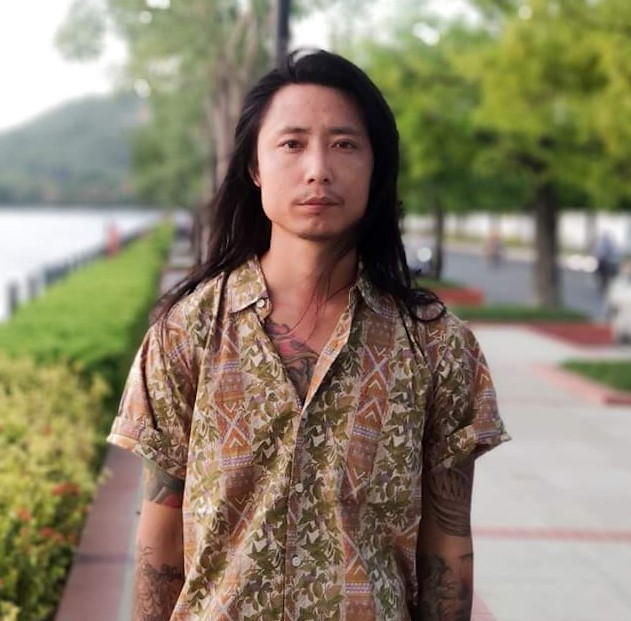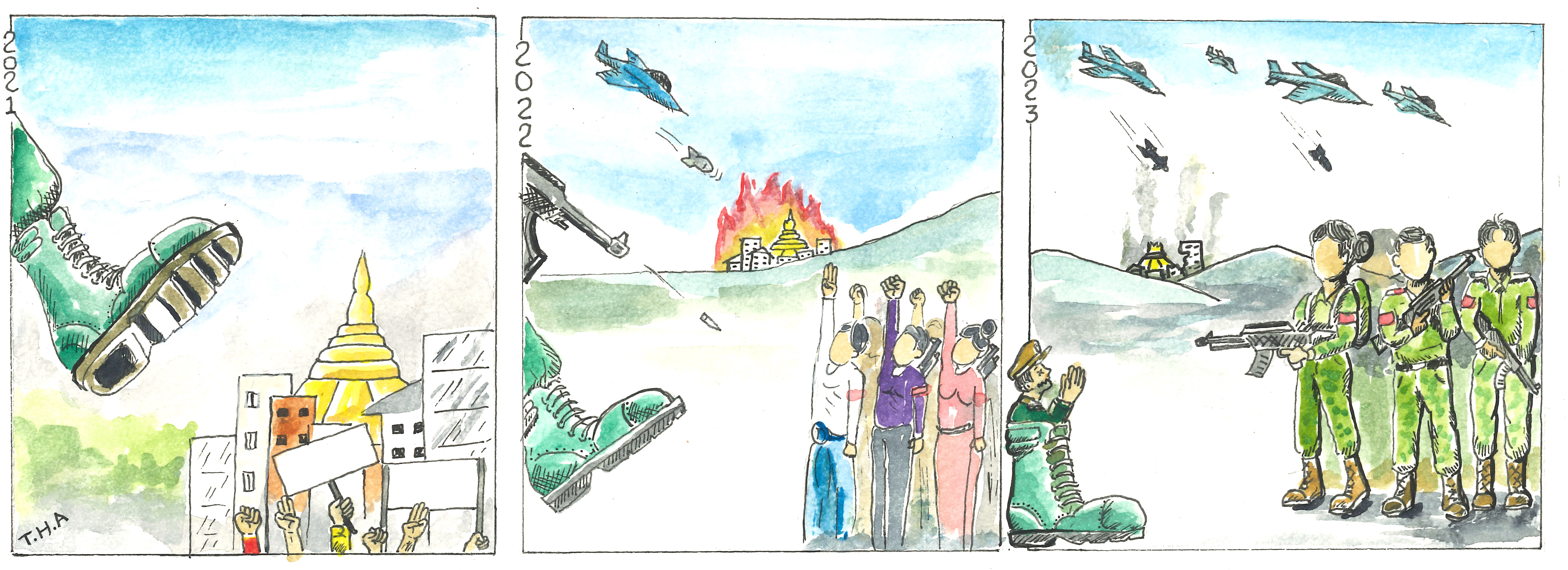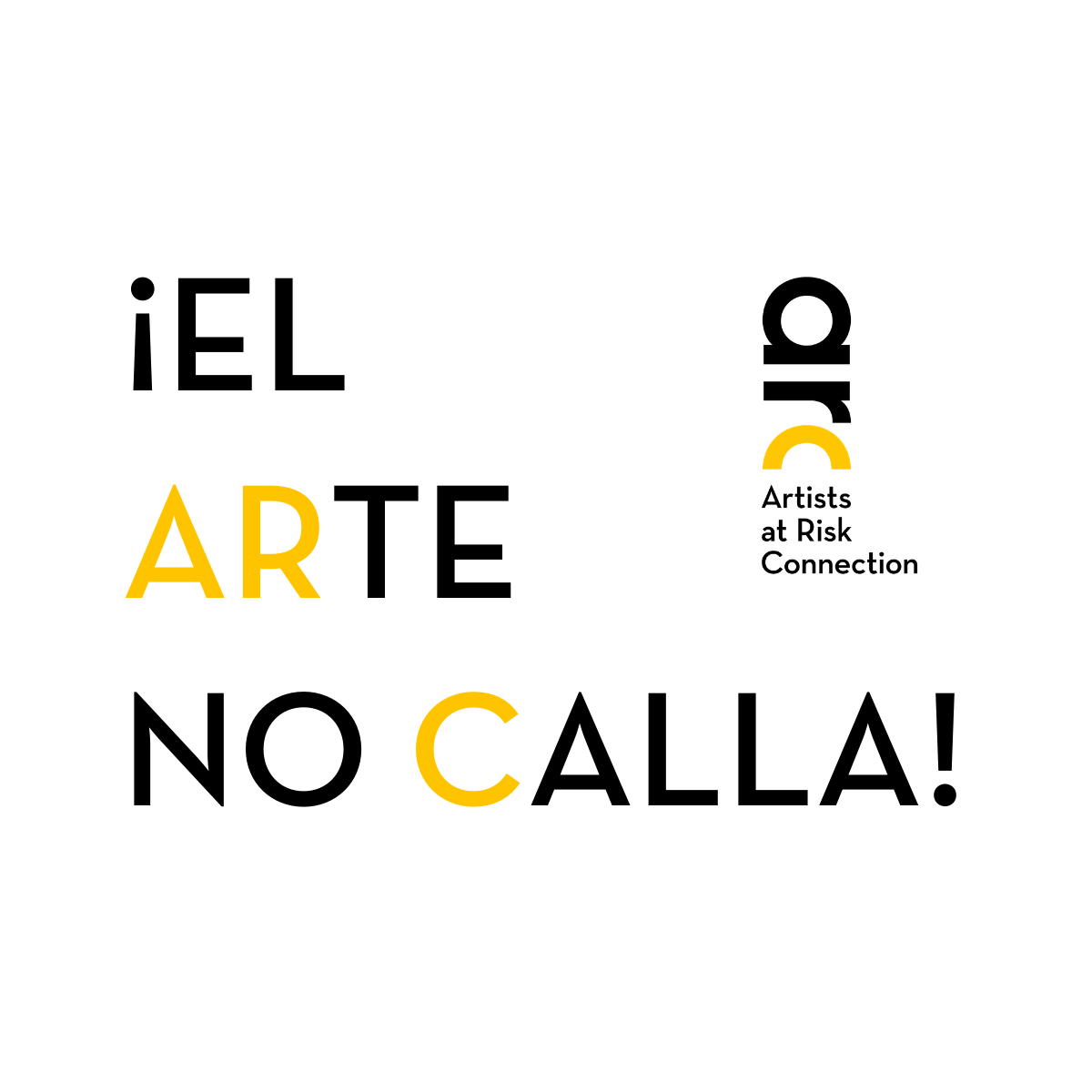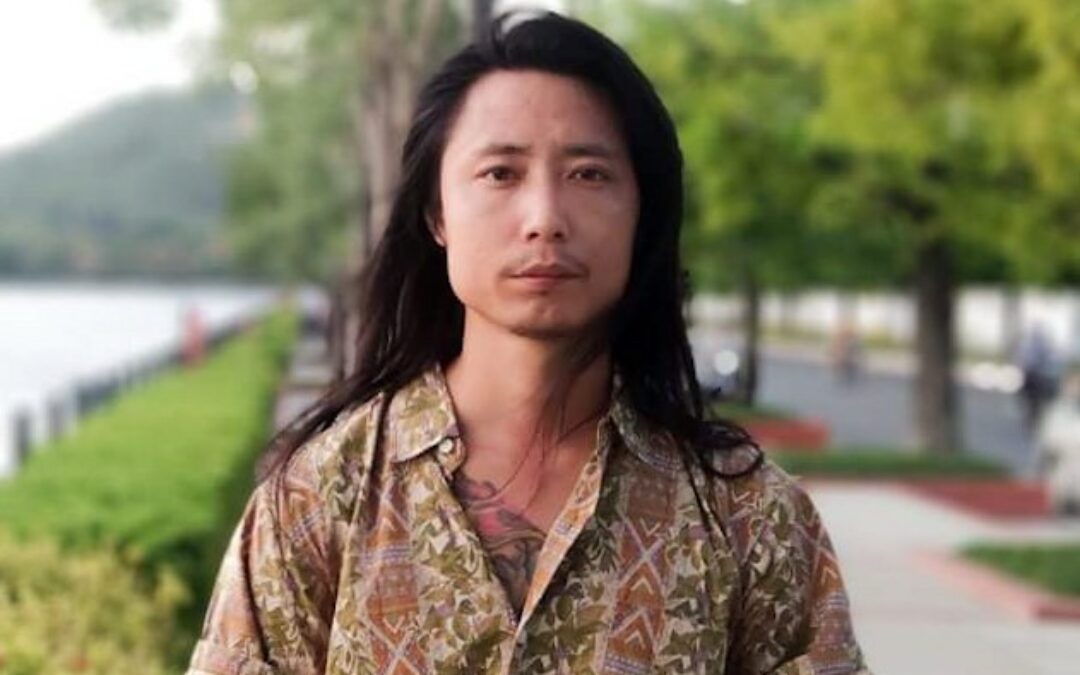Thiha
Painter
Myanmar, {Burma}

Exiled painter and multi-media artist Thiha recently moved to Paris where he plans to expose the cruel reality of life under the junta. He’s had a project in mind ever since a friend first showed him one of the most iconic pieces of political art: Théodore Géricault’s The Raft of the Medusa.
“I saw the pain of my people in it,” Thiha explained in an interview with ARC. He plans to replace Géricault’s starving French sailors with Burmese protesters starved of space to express themselves, pulling his inspiration from photos of the Spring Revolution, the 2021 pro-democracy protests that erupted in response to the coup.
But Thiha’s story as an artist begins as far as his memory can stretch, because he cannot recall a time when he didn’t feel the urge to create. For Thiha, art and creation have always been.
Choosing Art

Thiha with his artwork. Courtesy of the artist.
Painting for the Resistance
On February 1, 2021, the military junta seized power. Burmese citizens were stunned. Thiha had never engaged in activism, but when he heard the news he asked to leave work, walked down the street with friends, and joined a demonstration. His pro-democracy work had begun.
Chaos spread as quickly as oxygen. The police cracked down on protestors with lethal force. The junta released prisoners charged with violent crimes and allowed them to terrorize residents. Thiha joined a neighborhood watch, and his friend remembers receiving a call from Thiha after he had just chased away a boy with needle marks on his neck and a Molotov cocktail in his hand. The adolescent had been dropped off by a military vehicle and told to burn down the house of a firefighter. Such youths caused real destruction, yet Thiha speaks of the “attackers” with quotation marks. To him, they were poor street kids under the influence of drugs.
Still, the chaos stymied Thiha’s creativity. He desperately needed time and space, but had neither. He was working, demonstrating, volunteering, and patrolling. His brother was living with him. Then his boss’s family moved in when their house was burned down. He developed a stomach ulcer and couldn’t eat properly.
This creative impasse slowly resolved as he became accustomed to a violent new normal. After nearly a year, he set up a small space in the corner of the crowded lodgings and began painting. He started posting his political art on social media while donating the profits from “easy to sell” art to the pro-democracy movement. These two forms of art became acts of resistance.
But it was dangerous. Thiha knew people who were detained or killed, and his name was circulating in local police stations. When one of his employers were arrested, Thiha knew it was time. He deleted his social media, hid his paintings, and with the support of the NGO Info Birmanie, fled to Thailand.

Painting by Thiha. Courtesy of the artist.
Thiha arrived with only a small bag and no art supplies. He started volunteering his creativity, running art therapy workshops and creating a stop-motion video for Info Birmanie. But Thiha’s experience in Thailand was overshadowed by the agonizing wait for his visa to France, which he secured in December 2023.
Creating Without Fear

Three Panel Cartoon on Myanmar. Courtesy of the artist.
For the first time in Thiha’s life, he can create without fear of persecution or deportation. He is reunited with his partner and surrounded by people who encourage him to paint.
“To be safe is a huge freedom,” Thiha said. “When you can free your mind of the fear, you allow space for more creation.”
But freedom isn’t without challenges. Half of Thiha’s heart remains in Myanmar. He worries for his family and friends. He speaks of homesickness as if it’s a privilege he’s too fortunate to indulge in because “each step of my [journey] leads me to a freer place, when my country went in the exact opposite… my art should be a message, one of the many stolen voices of Myanmar.”
That stolen voice is going to share the real story of his people.

Thiha and a group of demonstrators in Paris marking three years since the Myanmar coup. Courtesy of the artist.
Emma Reynolds, February 1, 2024. Emma is the Coordinator for Protection Programs at Artists at Risk Connection. She has a master’s degree in international emergency management from Georgetown University and a master of fine arts in creative writing from Columbia University. She previously worked as an advocate for survivors of gender-based violence. She currently lives in New York City.






